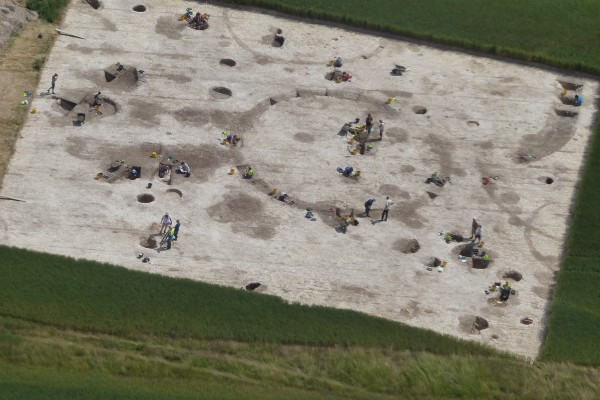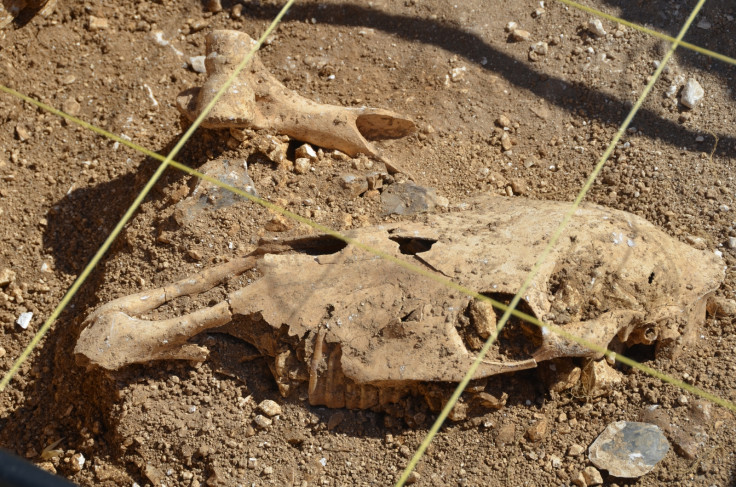Prehistoric town Duropolis discovered in Dorset is one of Britain's largest Iron Age settlements

A prehistoric township recently discovered in Dorset could be one of Britain's largest, with 150 roundhouses dating to the first century BC.
Dubbed Duropolis after the local Iron Age tribe Durotriges, the remains of the town were found by students at Bournemouth University near Winterborne Kingston in Dorset.
The remains of 16 roundhouses were found and a geophysical survey revealed at least 150 roundhouses and associated features – meaning the Iron Age township is one of the largest ever to be found in Britain.
Miles Russell, an archaeologist and co-director of the Durotriges Big Dig said, "We've exposed remains of 16 roundhouses in the two trenches we've dug. They are pre-Roman house structures, the last that inhabitants would have been living in before the Romans arrived. We know that there are around 200 of these across this area, so we've got ourselves a prehistoric town or proto-urban settlement."
Researchers believe the find will help provide an insight into what life was like before the Romans invaded. They also think it might explain what happened to the inhabitants of Maiden Castle, who moved from their hilltop settlement in the first century BC.
"What we've discovered is extremely significant for the whole of Southern Britain because in the past archaeologists have tended to look at really obvious sites, like the big hill-fort of Maiden Castle, near Dorchester," Russell explained. "What we have here is an extensive open settlement, not a hill fort, so it wasn't visible as a settlement from the earthwork on the landscape. What we've discovered is one of the earliest and largest open settlements in Britain."
Paul Cheetham, another co-director on the dig, added "What this suggests is that there are other big centres of occupation before the Roman arrival, this is a big open settlement, probably one of the first that the Romans encountered when they arrived. It exposes the myth that everyone lived in protected hill forts – these inhabitants lived in this fertile farmland, away from the traditional hill forts we are all used to hearing about."
Along with the town, archaeologists also found animal bone remains suggesting ancient Britons created hybrid beasts similar to those found in the Mediterranean cultures.

A report on the find in the Independent said animal bones had been deliberately rearranged to create hybrid animals, such as a sacrificial cow with its legs removed and replaced with a horses. They also found a sacrificed sheep with two heads and a horse with a cow's horn protruding from its forehead.
Even stranger, archaeologists found a young female skeleton who was probably sacrificed and then buried on a bed of cattle, sheep, horse and dog bones. The animal bones had been arranged to mirror the bones of the woman – the skull fragments served as a pillow for her own head, while her legs rested on the animal leg bones.
Russell told the newspaper: "The discoveries are helping to transform our understanding of key aspects of Late Iron Age Britain – the type of society that existed just a couple of generations before the Roman conquest.
"The sacrifice of so many animals and the unusual treatment of their bones is likely to shed totally new light on Iron Age belief systems – and may suggest that the Ancient Britons had beliefs or mythologies which involved hybredized animals, just as the ancient Greeks had."
© Copyright IBTimes 2025. All rights reserved.






















